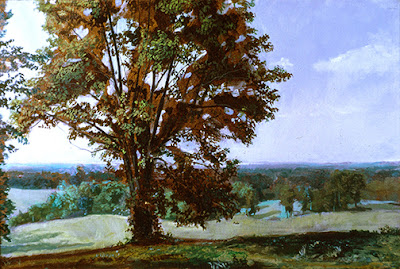Art History Is A Living Thing / Edward Hopper's Studio

Art history is a living thing that whispers to contemporary artists. For me as a painter it's a wind that fills my sails, but I get to set the course. Above is a group of photos I pulled together yesterday to show some the background to my painting Edward Hopper's Kitchen: Open Door, oil on canvas, 40 x 60 inches, 2019 (the bottom image) In the top row the photo at the left is one I took of the studio bathed in morning sunlight when I stayed there in 2016. Hopper designed his painting studio down to the last nail. It was purposely built at the crest of a sand dune to allow unobstructed views in all directions. According to his wife Jo's journals, while she loved gazing out at Cape Cod Bay to the West, Hopper preferred looking inland over the then sparse rolling dunes. The middle photo is one my wife Alice took of me with my easel set up in Hopper's small kitchen painting one of the interior views. In order to create the largest possible room for him to paint...



